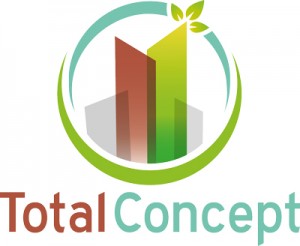 The Total Concept offers a method and a financial tool that can provide the information required by establishing an informed platform for decisions about investments in energy-saving measures.
The Total Concept offers a method and a financial tool that can provide the information required by establishing an informed platform for decisions about investments in energy-saving measures.
Major energy savings involving existing buildings are necessary if EU member states are to live up to the goals set for energy efficiency and CO2 reduction, and is a prerequisite conditions for the shift from fossil energy to the sustainable or regenerative production of energy. Property owners´ ambitions to carry out major energy retrofitting projects needs to be increased in order to meet the energy efficiency targets in the building sector. The Total Concept method helps building owners to understand the financial benefits and opportunities with energy retrofitting and making it possible to come much further with energy improvements.
The Total Concept method in brief
The Total Concept is a method for improving energy performance in existing non-residential buildings with the aim of assuring maximum energy savings in a profitable way.
- The method applies a comprehensive approach to work with energy issues in a building with the aim to achieve maximum savings in a profitable way.
- The method is based on an action plan comprising a package of energy efficiency improvement measures that as a whole fulfils the property owner’s profitability requirements.
- The work process of the Total Concept is divided into three steps in a systematic approach covering the entire retrofitting process, from pre-study phase to follow-up phase, and ensuring that energy saving targets are actually reached.
- Quality and function of the building must remain the same or be improved.
Action package
The profitability assessment in the Total Concept method is based on internal rate of return method, where each investment is assessed by the actual yields that it creates, expressed as an internal rate of return. When forming an action package both the single cost-efficient measures (“low hanging fruits”) and more costly measures are considered. What will be included to the action package will be determined in the profitability calculations based on the criterion that the internal rate of return for the whole package fulfils the investor’s demands on cost of capital. The most economically profitable measures will assist the less profitable measures while the complete action package will fulfil the profitability frames set by the building owner. This way of working has shown that total energy savings of more than 50 percent are possible.
The profitability calculations are done with the Total Concept tool, the TotalTool, where the outcomes are illustrated in a simple-to-understand way for the decision makers, by using an internal rate of return diagram. The decision maker can see what impact each measure has in the overall profitability and supports the decision to carry out a package of measures instead of single profitable measures.
A process in three steps
The work process of Total Concept has been structured into three main steps. Each step includes a number of tasks to be carried out and requires a certain involvement from the specified stakeholders and key actors of the method implementation.
> Step 1 Creating an action package
> Step 2 Carrying out the measures
> Step 3 Following up
The technical details of the implementation of the Total Concept is described in the guidebook “The Total Concept found from the Total Concept tool-kit
